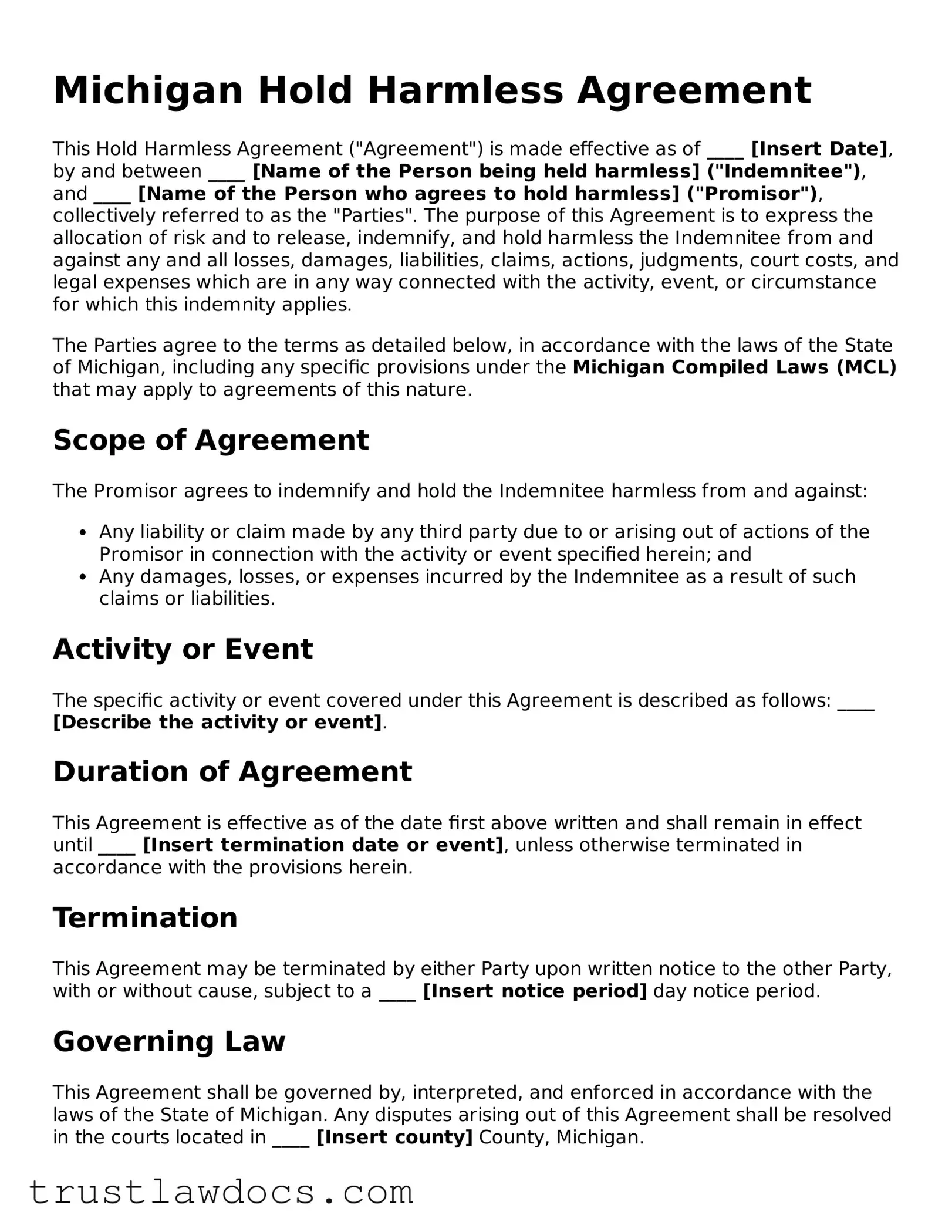Michigan Hold Harmless Agreement
This Hold Harmless Agreement ("Agreement") is made effective as of ____ [Insert Date], by and between ____ [Name of the Person being held harmless] ("Indemnitee"), and ____ [Name of the Person who agrees to hold harmless] ("Promisor"), collectively referred to as the "Parties". The purpose of this Agreement is to express the allocation of risk and to release, indemnify, and hold harmless the Indemnitee from and against any and all losses, damages, liabilities, claims, actions, judgments, court costs, and legal expenses which are in any way connected with the activity, event, or circumstance for which this indemnity applies.
The Parties agree to the terms as detailed below, in accordance with the laws of the State of Michigan, including any specific provisions under the Michigan Compiled Laws (MCL) that may apply to agreements of this nature.
Scope of Agreement
The Promisor agrees to indemnify and hold the Indemnitee harmless from and against:
- Any liability or claim made by any third party due to or arising out of actions of the Promisor in connection with the activity or event specified herein; and
- Any damages, losses, or expenses incurred by the Indemnitee as a result of such claims or liabilities.
Activity or Event
The specific activity or event covered under this Agreement is described as follows: ____ [Describe the activity or event].
Duration of Agreement
This Agreement is effective as of the date first above written and shall remain in effect until ____ [Insert termination date or event], unless otherwise terminated in accordance with the provisions herein.
Termination
This Agreement may be terminated by either Party upon written notice to the other Party, with or without cause, subject to a ____ [Insert notice period] day notice period.
Governing Law
This Agreement shall be governed by, interpreted, and enforced in accordance with the laws of the State of Michigan. Any disputes arising out of this Agreement shall be resolved in the courts located in ____ [Insert county] County, Michigan.
Amendments
No amendment or variation of this Agreement shall be effective unless it is in writing and signed by both Parties.
Severability
If any provision of this Agreement is found to be invalid or unenforceable, such provision shall be severed, and the remainder of the Agreement shall continue in full force and effect.
Signatures
This Agreement has been executed by the Parties, signifying their agreement to the terms hereof as of the date first written above:
Indemnitee: ____ [Indemnitee's Signature]
Name: ____ [Indemnitee's Printed Name]
Date: ____ [Date]
Promisor: ____ [Promisor's Signature]
Name: ____ [Promisor's Printed Name]
Date: ____ [Date]
